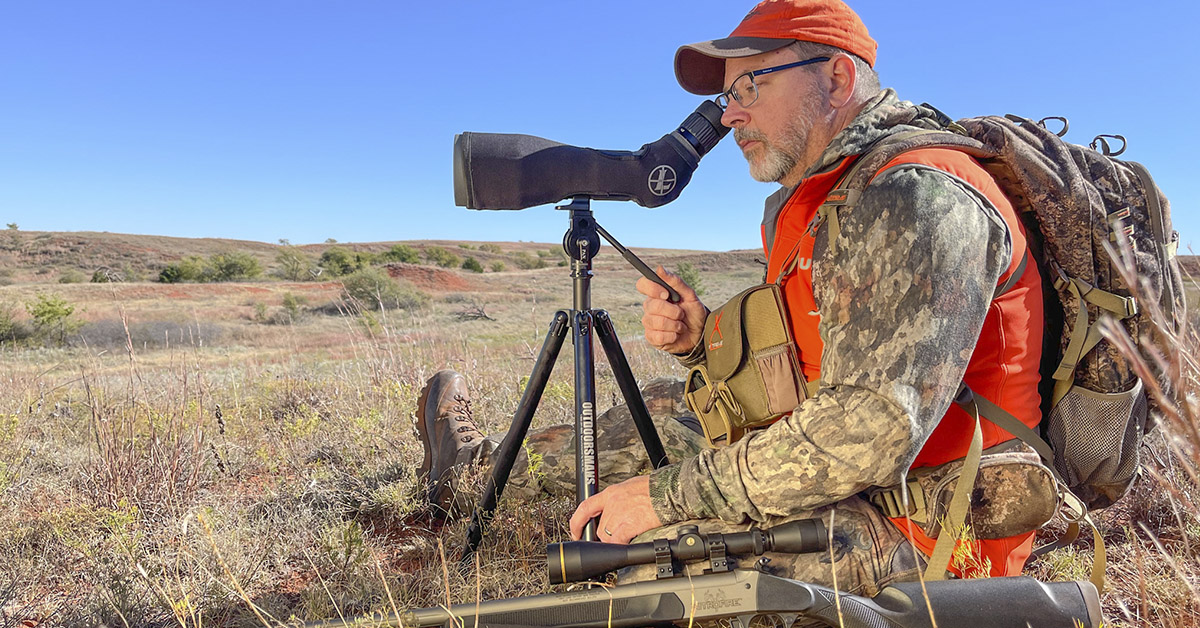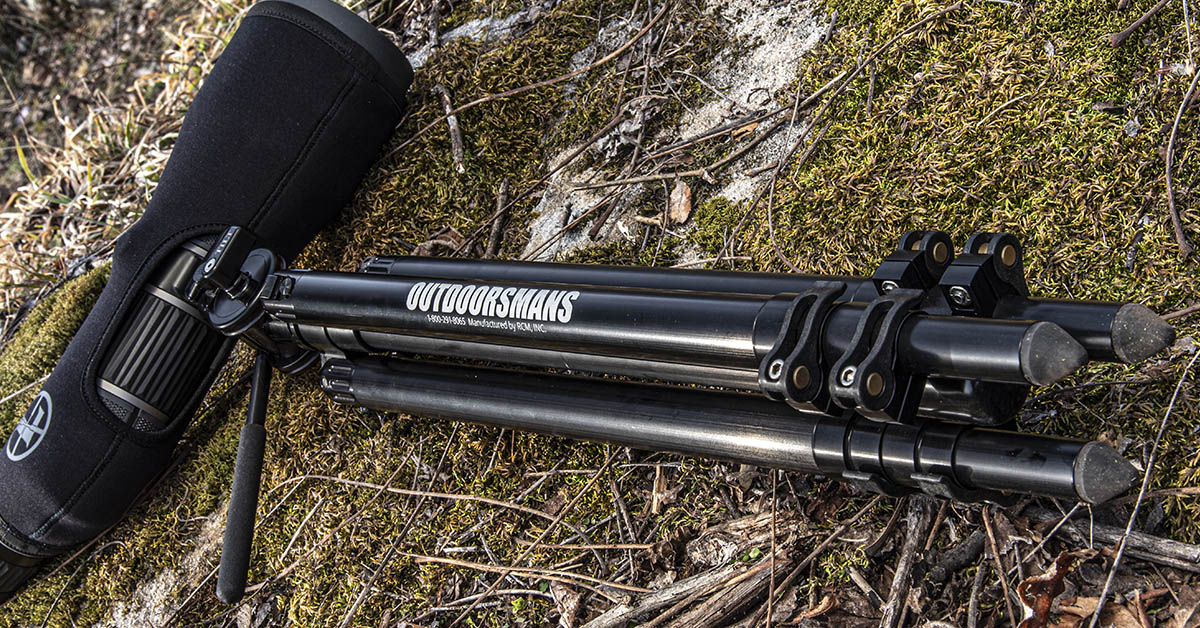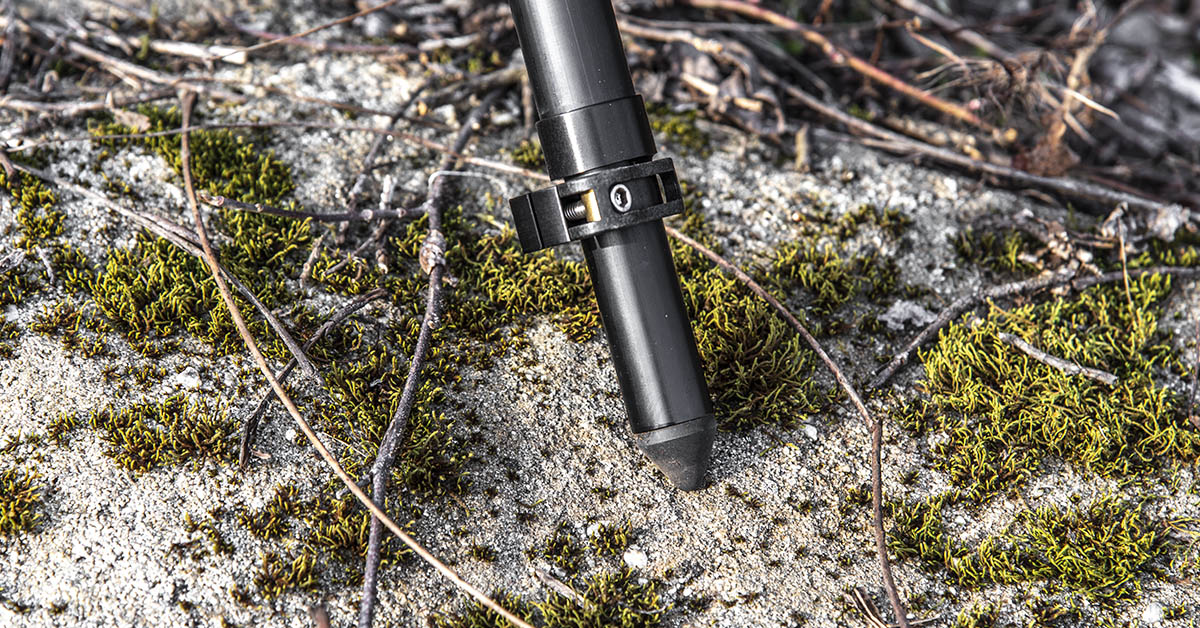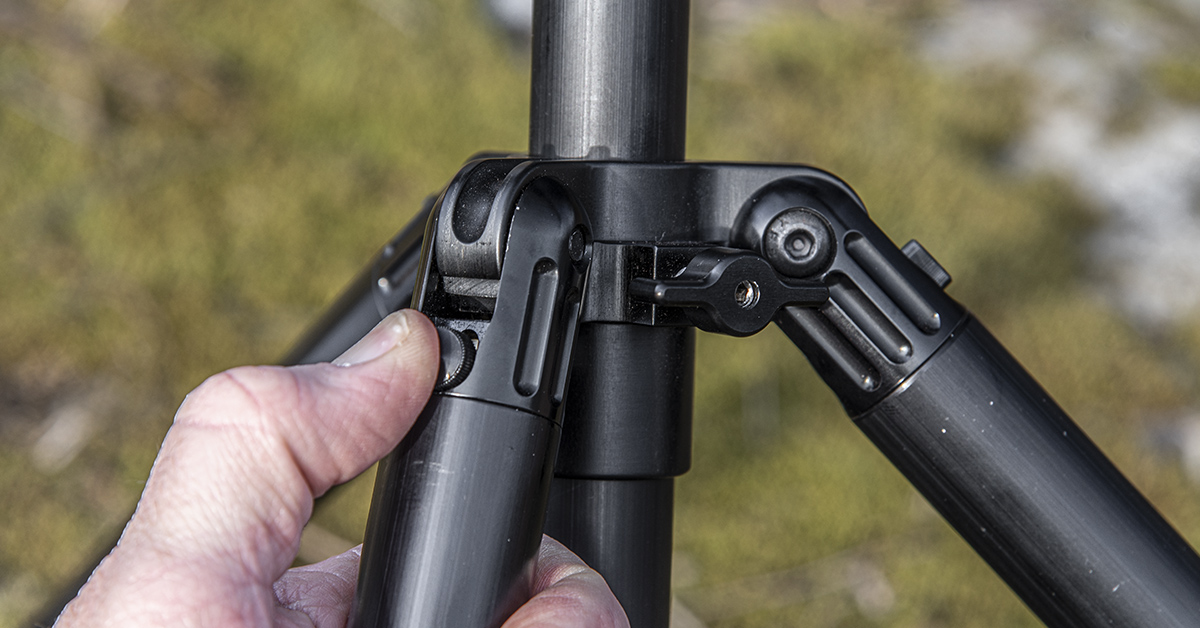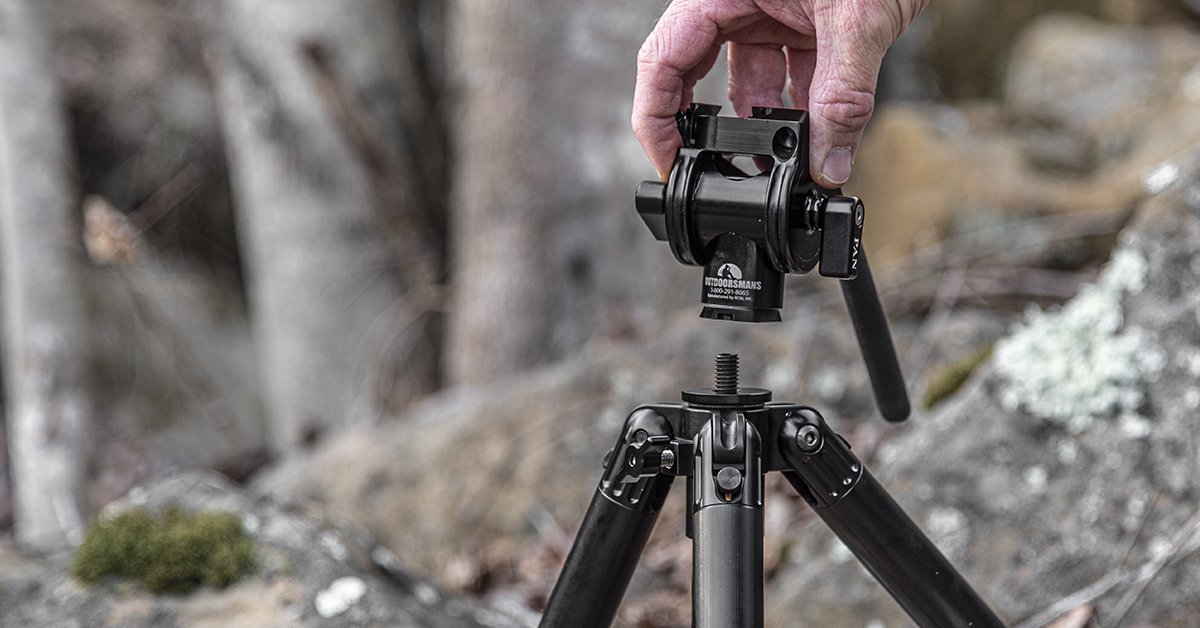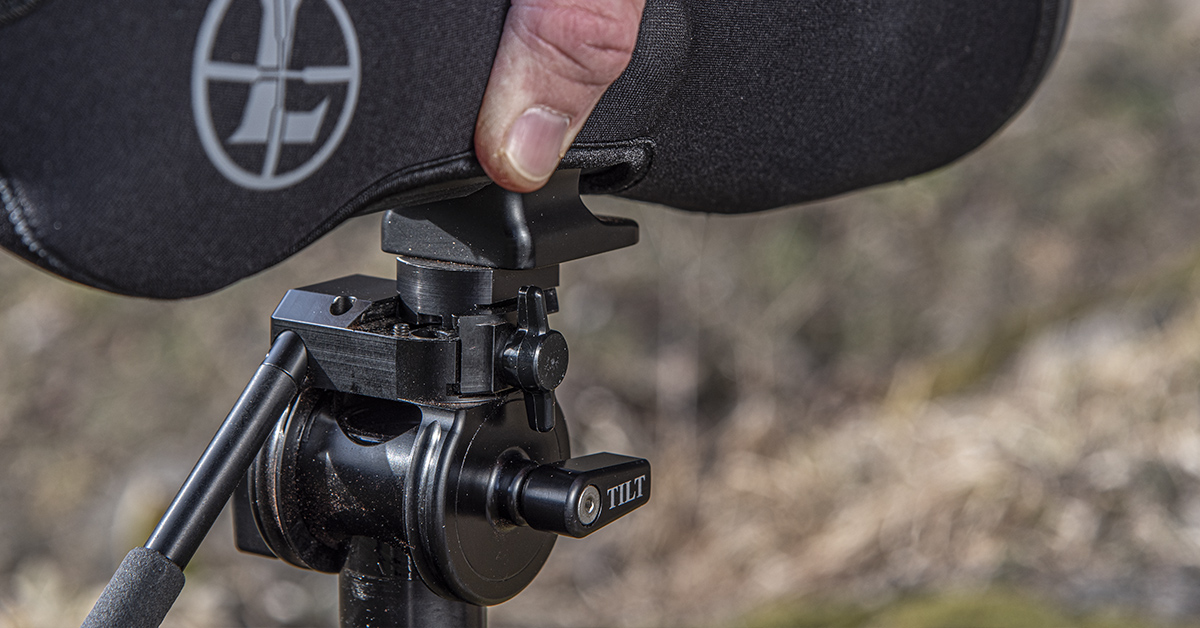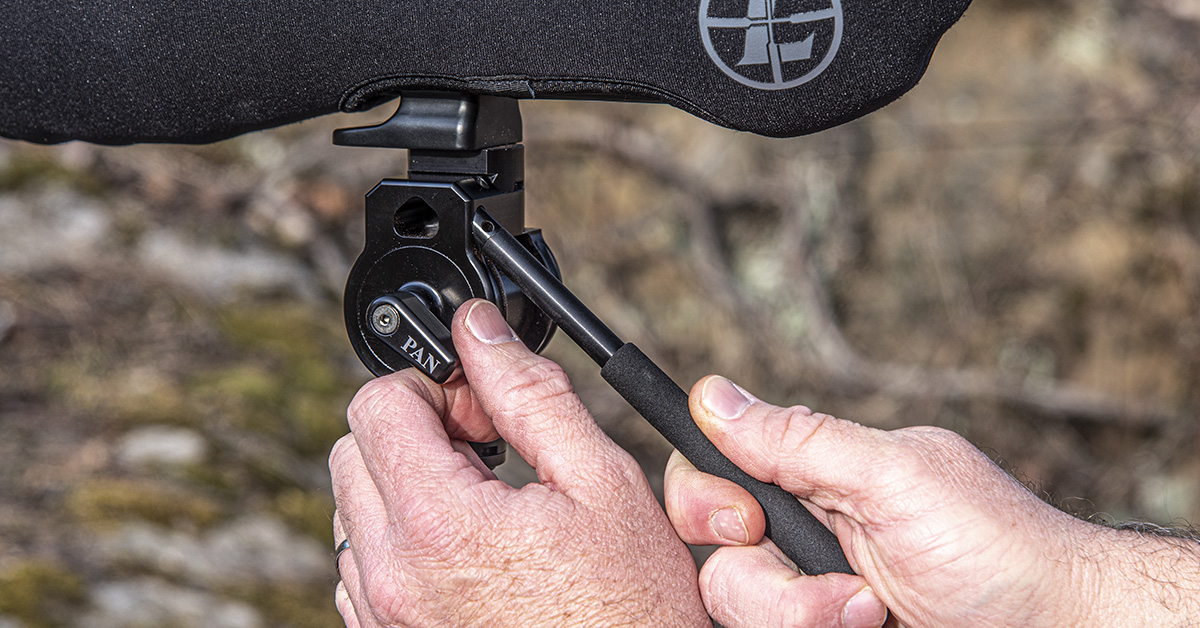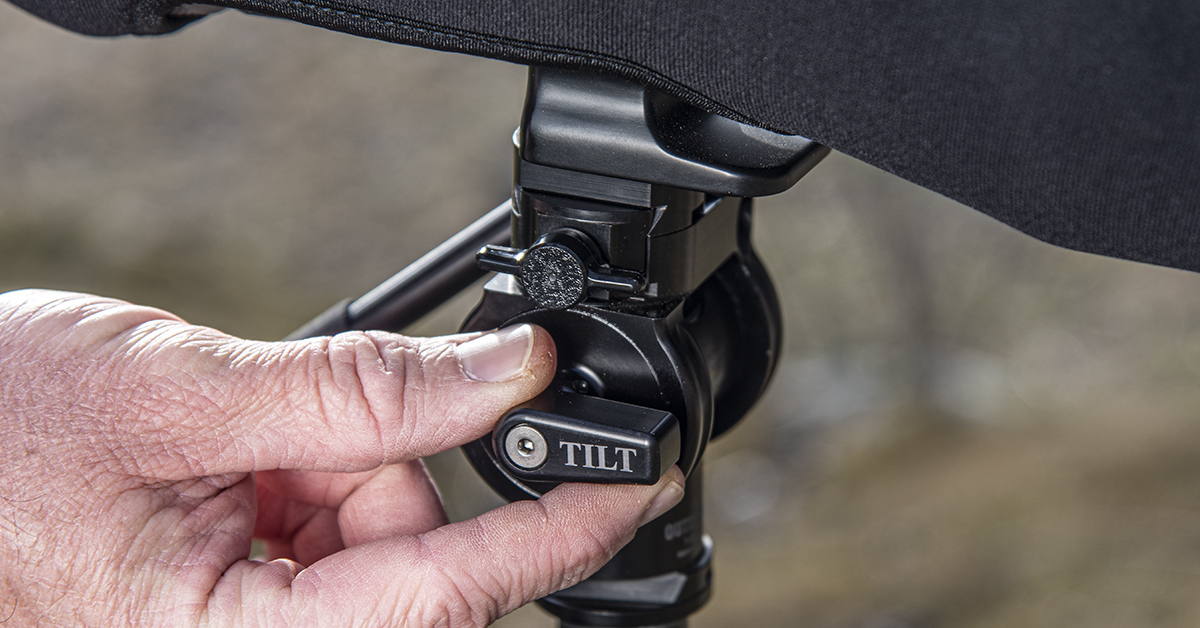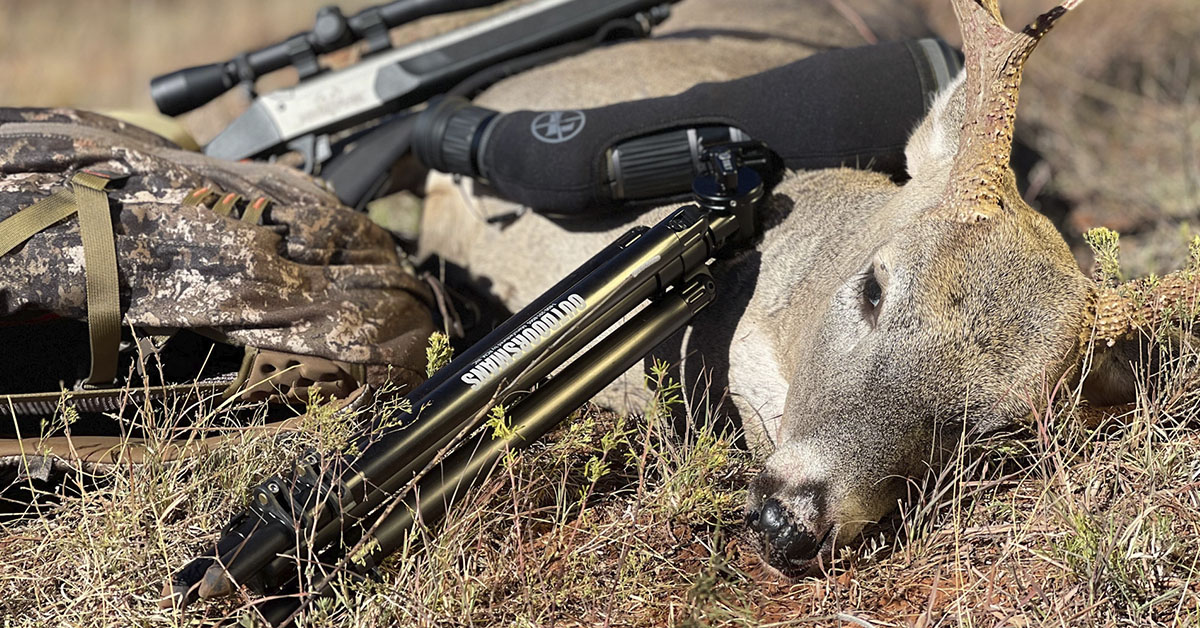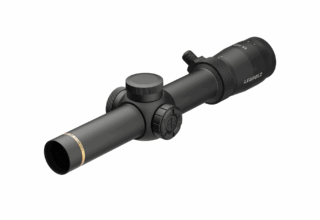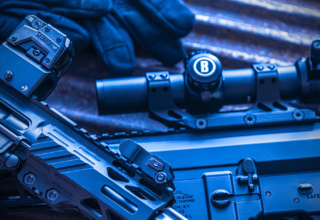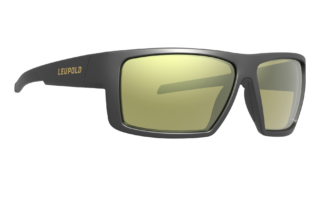If you run a spotting scope in the hunting fields or on the range, this is the tripod system you need!
by Rob Reaser
Many lessons from my school days have been lost in the fog of distant memory, but one has always stood out. My 10th grade math teacher once offered up a philosophical discussion, and his life advice to our fidgety, glazy eyed class stuck with me: “You don’t have to be an expert on everything but try to know something about as much as you can.”
I took that advice to heart, and over the years have dabbled in quite a few disciplines. Unfortunately, I’ve mastered few of them.
The following year, I picked up the camera and it has been a cornerstone of my work life for over 30 years. So, I know a little something, as my math teacher advised, about tripods. I’ve used everything from the very worst examples of the breed to some that I could never justify spending with my own money.
That critical, experienced eye regarding tripods transitions from my photography work to my shooting and hunting passions. Since vibration mitigation, intelligent operational control, and field adaptability are as paramount for taking quality photographs as they are for employing a spotting scope, I am a grueling taskmaster when it comes to tripods.
So, when I tell you that I’ve been enjoying the best spotting scope tripod I’ve ever used, I hope you place more than a little weight on that assessment.
Those of you who are hardcore western hunters might be familiar with the Outdoorsmans brand. While the company is a stocking dealer for some of the top names in sporting optics, Outdoorsmans manufactures their own pack systems and, most notably, their own tripods and related accessories. It is their tripods that Outdoorsmans is arguably best known for, and for good reason. They are light for the performance delivered, are precision-made in every aspect, and are designed to meet the grueling needs and expectations of the serious hunter.
Outdoorsmans makes exactly one tripod design, available in three different sizes. There is no need for them to make multiple models because this one design does it all and does it exceedingly well. We’ll tell you up front that the price of admission is steep—$549.99 for the tripod alone…no head—but as with most things, you get what you pay for.
The tripod’s legs, center post, and hub are constructed of anodized aluminum. This keeps weight down (44 ounces for the standard model) while delivering optimal strength for field work. The compressed height is 18.5 inches, and the unit is about 2.5 inches wide when folded. This makes it easy to lash to a pack for quick deployment. A standard 3/8-inch stud sits atop the tripod, making it compatible with all Outdoorsmans and most other tripod heads on the market today.
The legs end with a somewhat pliable rubber foot. The conical shape plants the legs solidly in soft soil while the rubber construction offers good traction on rocks or other hard surfaces. This is a much better design than the conventional flat rubber or plastic “cup style” feet offered with most tripods today. Another advantage of this foot design and material construction is that it helps dampen vibration—the bane of high-magnification optics users.
The tripod legs are of a three-piece construction that adjust for infinitely variable height between the collapsed and extended limits. Over-center cams offer solid locking. The clamp arms are ergonomic, offer ample leverage, and quietly lock and unlock into place—no snaps or clicks, which is advantageous for hunting.
The legs pivot independently on a precision-machined hub. Depress the spring-loaded stud to open the leg to one of three angles. The ability to adjust the leg angles and height independently allows the tripod to stand vertical and stabile regardless of the terrain.
Outdoorsmans offers several head options, including a fluid head, pan head, micro pan head, and a pistol grip head. We opted for the pan head, which, like the others, install onto the tripod’s 3/8-inch screw stud. As with the tripod, the pan head is constructed of anodized aluminum for weight savings yet is strong enough to manage hefty spotting scopes (up to 95mm) and rifles (yes, the company even makes firearm mount systems so you can use the tripod and head for long-range shooting support and for binoculars).
The head uses a dovetail clamp system to secure a spotting scope or other device. Outdoorsmans offers two different adapter plates—1/4-20 thread and 3/8-inch thread—to interface the optic to the head. Here, we use the 1/4-20 adapter to secure our Leupold SX-5 Santiam HD to the pan head. Simply slide the mounted adapter into the dovetail and lock into place. The head includes an indexing/stop stud that ensures proper seating and positioning of the adapter to the head.
Vertical and horizontal axis rotation is silky smooth and independently adjustable. The handle is foam-padded, providing a solid grip. Rotate the pan lever on the left side of the head and the optic moves with fluid-like ease. Tight manufacturing tolerances eliminate any wobble, making it easy to locate your target and lock the head in place.
The tilt lever is located on the right side of the head. Again, there is no wobble when the lever is released, just a smooth and precise rotation.
One aspect of both the tilt and pan levers is that only slight rotation is needed to move between full lock and free turn. This makes adjustments and target tracking fast and easy.
As we mentioned, tools of this caliber don’t come cheap. If, though, you have spent much time behind glass in a broad range of hunting and terrain conditions, you understand the value of a rock-solid, stable optics platform. In that, you will find no better companion than the Outdoorsmans tripod system.

